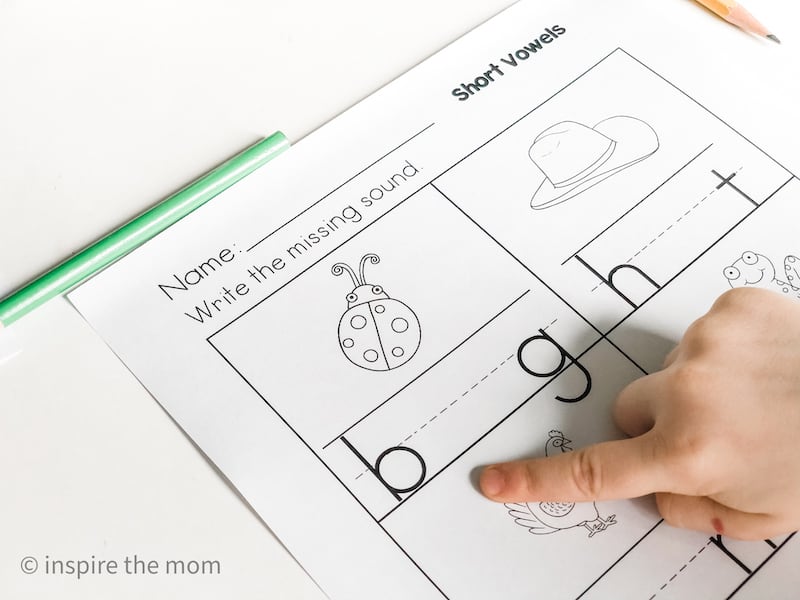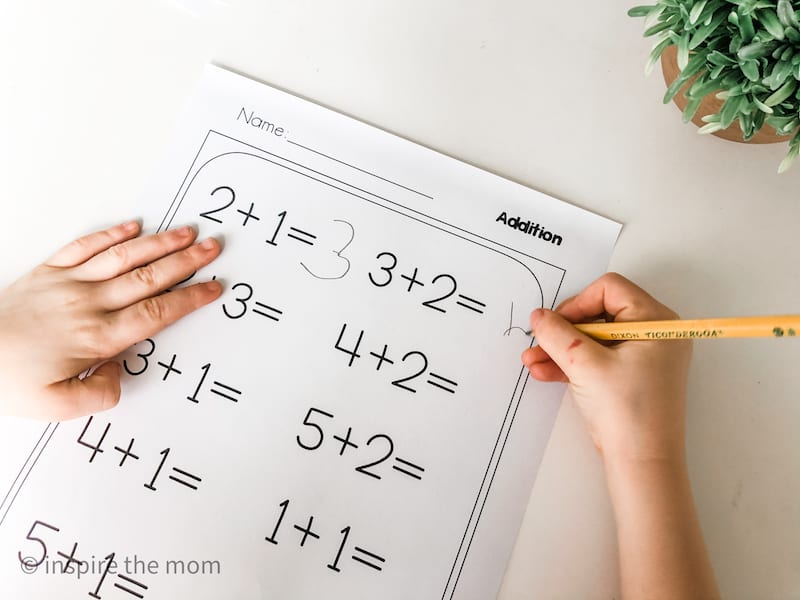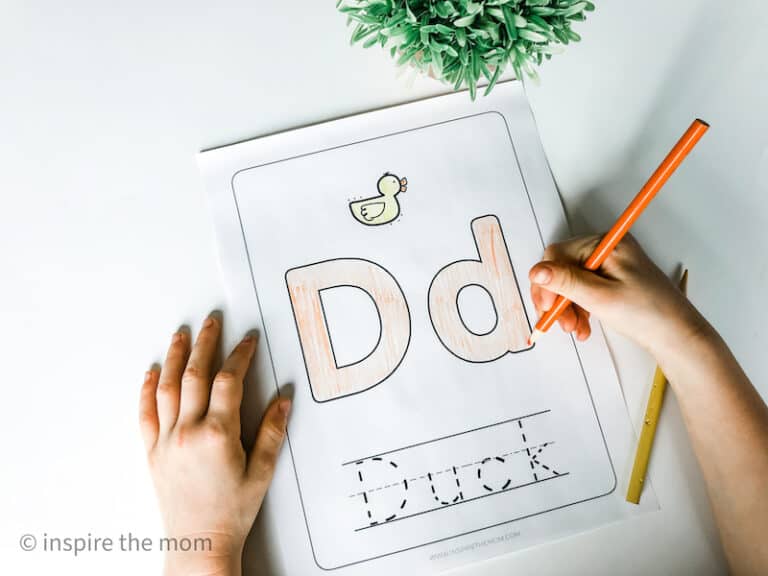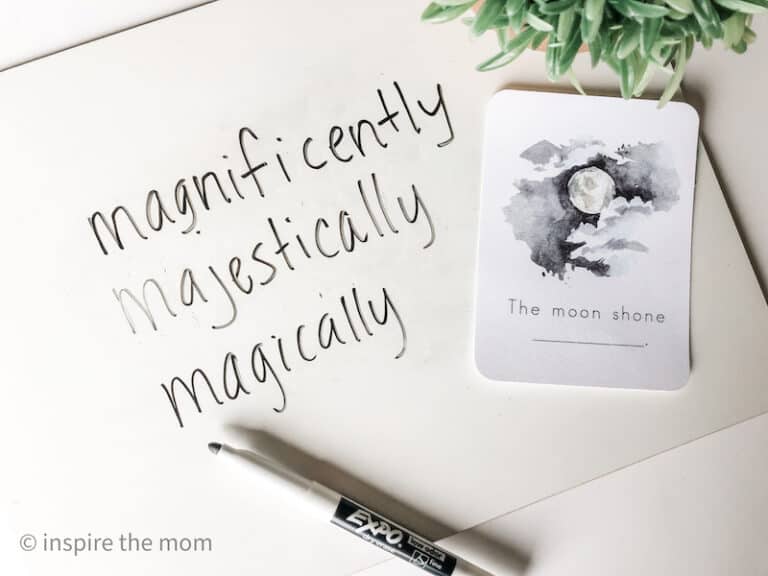Spring-Themed Math and Literacy Activities Pack
It’s still cold outside, but this Spring Activities Pack is prepped and ready to go, so I’m going to share it. The content of these activities is more of what we have been working on this year, but with a Springtime theme.
I don’t know about you, but I’m ready to indulge this Spring-fever. No more snowflakes and gingerbread cookies, we have moved onto birds, butterflies, and flowers.
So far, my kids seem to be on board.
Printable Spring Math and Literacy Activities Pack
This pack has over 100 activity pages to pull out and use with my littles during the spring season and covers everything from upper and lowercase letters to shapes and patterns.
I also added a few more math options to this pack. For example, basic addition and subtraction equations.
These worksheets are great to have on hand. We use them during our morning time or when my preschoolers need a little something to do while I am working with their other siblings.

Literacy Activities for Preschool and Kindergarten
Literacy activities should come second to reading aloud to your kids. It has been statistically proven that children who are regularly read to, from an early age have a significant academic advantage.(Fifty Top Literacy Statistics)
With that being said, as you begin to branch into academic activities with your kids, here are some of the common preschool or kindergarten concepts that you can be working on with your kids:
1. Letter recognition: Learning to recognize the letters of the alphabet is the beginning of reading. By tracing, coloring, and writing they will get more familiar with each letter. Pair this with some other simple ways to teach the alphabet and they will know their letters in no time.
2. Letter sounds: Learning the letter sounds is another component of learning the alphabet and is the essential to begin reading. Encourage your kids to say the letter sounds out loud as they are working on activities or have them find some while you are reading.
3. Beginning/Middle/ending sounds: Once the kids are fairly familiar with the alphabet and its sounds, they can start to look at words and figure out where the sounds go. Some activities that help kids get acquainted with this concept are worksheets (like this), clip-cards, or simply pointing it would during your daily reading.
4. Rhyming: Rhyming is another aspect of reading that helps with fluency, inflection, understanding word families, and more! Along with reading some great poetry books with your kids, have them practice rhyming out loud and engaging with a few activities like the ones provided in this pack.
5. Word families: Word families help kids to see how some words are closely related. By practicing these they begin to recognize the pattern and letter blends that comprise the families.
6. Sight words: These are typically high frequency words your kids will encounter a lot as they begin reading. Exposure is the key. Practice reading every day along with flash cards, or even a printable word wall.

Math Activities for Preschool and Kindergarten
Keep in mind this age is very hands-on. Don’t rely on worksheets to teach your kids early math concepts. Give them concrete objects to work with and let the printable math activities be a supplement and practice for what they are learning.
Here are some of the common math concepts for preschool and kindergarten:
1. Number recognition: Number recognition is a bit like letter recognition. Your child can see a number five and know its name. This is also a good age to introduce the number word as well. comes from seeing the number and associating it with an amount.
2. Counting: Counting is the beginning of their math journey. Manipulatives are very helpful at this age because kids this age do best when they are working with concrete objects.
3. How many: This is where the student is able to see the number and associating it with an amount. I like activity pages where kids can count the objects then write the correct number. If you kids aren’t writing yet, have them identify the correct number by pointing.
4. Basic Addition and Subtraction: At this stage these are simple math problems usually with numbers between 1-10 while using concrete objects.
5. Shapes: This is a great time to learn shape names. Some of my favorite ways to teach this are: shape worksheets, shape practice pages, and printable shape posters.
6. Patterns: At this age kids are ready for simple patterns. To get your kids to recognize patterns, walk around the house and discover patterns on fabric, dishes, or toys. Then go outside and find them in nature. Then give them some color crayons or blocks and have them begin to make their own patterns. Lastly, practice pages for an element of fun and review.

How to Use and Assemble the Math and Literacy Activities
The great thing about this pack is that it is print and go. If you would rather use it as an ongoing practice notebook, you can put the pages into clear page protects, insert those pages into a 3-ring binder, and using reuse the pages daily with a dry erase marker.
These activities are designed to be a supplemental review of what they are already learning. To make the most out of these spring math and literacy activities, have your kids practice these concepts daily.
Math and Literacy Activity Pack Download
If you want to print these Spring-Themed Activities for your homeschool or classroom you can get the download HERE.
Content Preview of the Math And Literacy Activity Pack
With a spring-theme, these activities are designed to reinforce the basic skills that pre-k through kindergarten students are working towards.







Keep Reading:
- Things your Preschooler Can Learn at Home
- Benefits of Reading Aloud to your Kids
- 10 Best Picture Book Treasuries for Kids
- What is a Living Book
- Printable Preschool Daily Skill Builder
- Printable Kindergarten Daily Skill Builder
Also, check out our Spring Busy Book!
What is your preschooler or kindergartener learning?
*This post contains Amazon Affiliate links.







